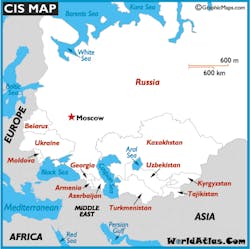The demand for industrial automation, rising energy costs and improved understanding of the advantages of electric drives will encourage their uptake across Eastern Europe, Russia and the Commonwealth of Independent States (CIS) countries over 2012-2016, but corruption and limited development of the private sector is holding back use of the technology.
New analysis from Frost & Sullivan (http://www.motors.frost.com) in the form of a report, Electric Drives in Eastern Europe, Russia and CIS Market, finds that the market earned revenues of $472.5 million in 2011 and estimates this to reach $652.1 million in 2016. The research covers Alternative Current (AC), Direct Current (DC) and Servo Drives. AC drives are the largest product segment in the market.
“Industrial automation helps optimise manufacturing processes, improve plant performance and reduce operational costs,” explained Frost & Sullivan Industrial Automation & Process Control (IPC) Research Analyst Maryna Osipova. “AC drives and servo drives are key components of advanced machines that help end users achieve such goals and sustain competitiveness on a global scale.”
Servo drives and AC drives maximise the cost-efficiency of production and reduce the operating costs of industrial processes. These types of drives are used in different frequency applications, and demonstrate superior energy performance.
Rising energy costs too are pressuring end users to enhance their energy-efficiency. This is training the spotlight on electric drives that support better energy performance.
“In eastern Europe, electric drives are perceived as one of the best methods to save energy,” explained Osipova. “The use of advanced electric drives has the potential to reduce energy consumption by 25 to 50 per cent.”
However, the high corruption index of CIS countries and Russia and the limited development of the private sector are impeding market development. Moreover, economic and political instability dampen the level of government and foreign investments.
“To successfully confront these challenges and limit the risks of establishing business in these regions, electric drives suppliers need to have a comprehensive understanding of the prevailing micro-environment,” advised Osipova. “On a positive note, anticipated anti-corruption legislation and reduced red-tapism are set to create a more conducive environment for private sector participation.”
Electric Drives in Eastern Europe, Russia and CIS Market is part of the Power Transmission Growth Partnership Service programme. Frost & Sullivan’s related research services include European Market for Integrated Motor and Drives, Electric Drives Market in European HVAC Industry, and Electric Drives Market in the North American Packaging Industry. All research services included in subscriptions provide detailed market opportunities and industry trends evaluated following extensive interviews with market participants.
Companies in this Article
Companies in this Article
Leaders relevant to this article:

